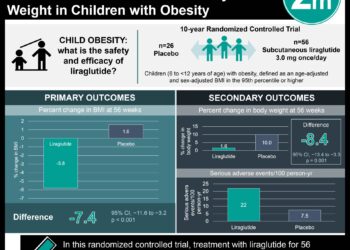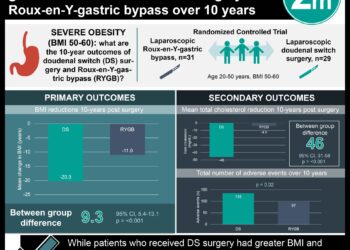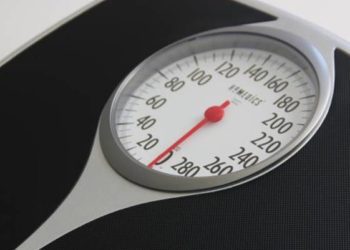Study examines childhood obesity trends
1. In a study examining childhood obesity in children ages 2 to 5 from 2003 to 2012, findings suggest that the decrease in obesity rate was associated with the decrease in the positive association of age and obesity status during the study period.
2. The decline in obesity was not significantly associated with changes in factors such as demographics, economics, race/ethnicity, physical activity, and calories consumed.
Study Rundown: Recent research has reported a 5.5% decline in the obesity rate among 2 to 5 year old children from the years 2003 to 2012. Many factors have been shown to influence obesity, such as demographic and health status, but the driving factor for this recent change remains unclear. Authors of the current study sought to identify these features using national survey data. During this period, several health influences improved, including more breastfeeding mothers and children eating less and exercising more; however, these factors were not found to be associated with the decline in obesity. The most influential aspect for the drop in obesity rate appeared to be related to a decrease in the association between age and obesity. The rise of obesity increased with age in the earlier periods, but not in later study years. This study may be limited by sampling error, recall bias, and random fluctuation in obesity rates over time. Nonetheless, the results are encouraging, particularly if this trend persists; providers should continue to encourage healthy eating and exercise habits in young children.
Click to read the study, published today in Pediatrics
Relevant Reading: A break in the obesity epidemic?
In-Depth [cross-sectional study]: Data from 2 sampling periods (2003-2004 and 2011-2012) of the NHANES (National Health and Nutrition Examination Survey) were used for analysis. A total of 926 children ages 2 to 5 were included from 2003 to 2004 and 974 from the 2011 to 2012 group. Researchers used Blinder-Oaxaca regression decomposition methods in order to identify health, economic, activity level, and demographic changes between periods, and subsequently how these differences affected the decline in obesity. Overall, the obesity rate dropped from 13% to 7% (p = .02). In the earlier study period, age was positively associated with the probability of obesity as the rate increased by 0.05 for every year increase in age (p = .003). However, this association was not significant in the later study period (p = .27). The link between obesity and age was more evident in boys than in girls for both the early (p ≤ .002) and later (p = .04) study periods. Factors such as race/ethnicity, extreme birth weights, activity time, or daily calories consumed were not significantly associated with the declining rate of obesity in this age group.
Image: PD
©2015 2 Minute Medicine, Inc. All rights reserved. No works may be reproduced without expressed written consent from 2 Minute Medicine, Inc. Inquire about licensing here. No article should be construed as medical advice and is not intended as such by the authors or by 2 Minute Medicine, Inc.






